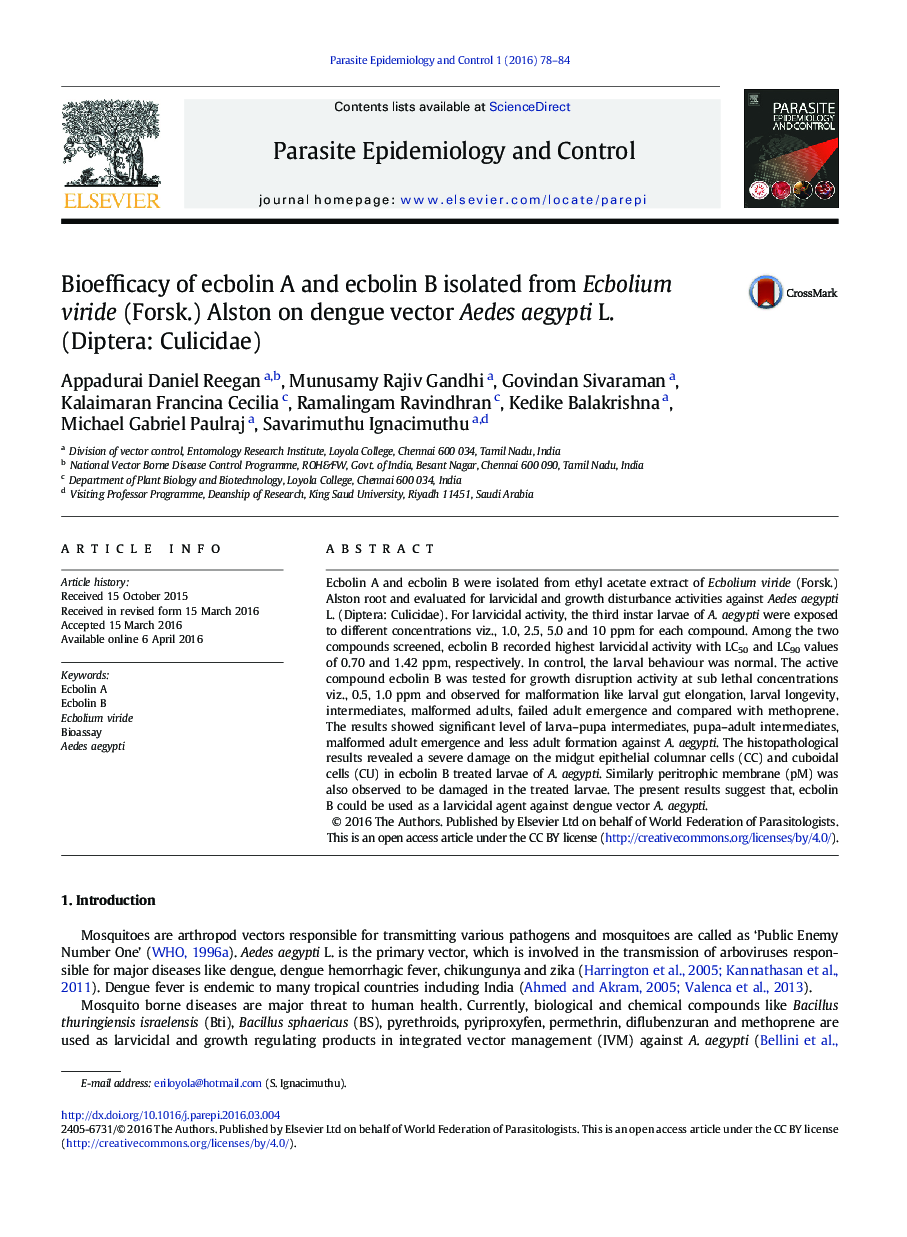| Article ID | Journal | Published Year | Pages | File Type |
|---|---|---|---|---|
| 2473671 | Parasite Epidemiology and Control | 2016 | 7 Pages |
Ecbolin A and ecbolin B were isolated from ethyl acetate extract of Ecbolium viride (Forsk.) Alston root and evaluated for larvicidal and growth disturbance activities against Aedes aegypti L. (Diptera: Culicidae). For larvicidal activity, the third instar larvae of A. aegypti were exposed to different concentrations viz., 1.0, 2.5, 5.0 and 10 ppm for each compound. Among the two compounds screened, ecbolin B recorded highest larvicidal activity with LC50 and LC90 values of 0.70 and 1.42 ppm, respectively. In control, the larval behaviour was normal. The active compound ecbolin B was tested for growth disruption activity at sub lethal concentrations viz., 0.5, 1.0 ppm and observed for malformation like larval gut elongation, larval longevity, intermediates, malformed adults, failed adult emergence and compared with methoprene. The results showed significant level of larva–pupa intermediates, pupa–adult intermediates, malformed adult emergence and less adult formation against A. aegypti. The histopathological results revealed a severe damage on the midgut epithelial columnar cells (CC) and cuboidal cells (CU) in ecbolin B treated larvae of A. aegypti. Similarly peritrophic membrane (pM) was also observed to be damaged in the treated larvae. The present results suggest that, ecbolin B could be used as a larvicidal agent against dengue vector A. aegypti.
